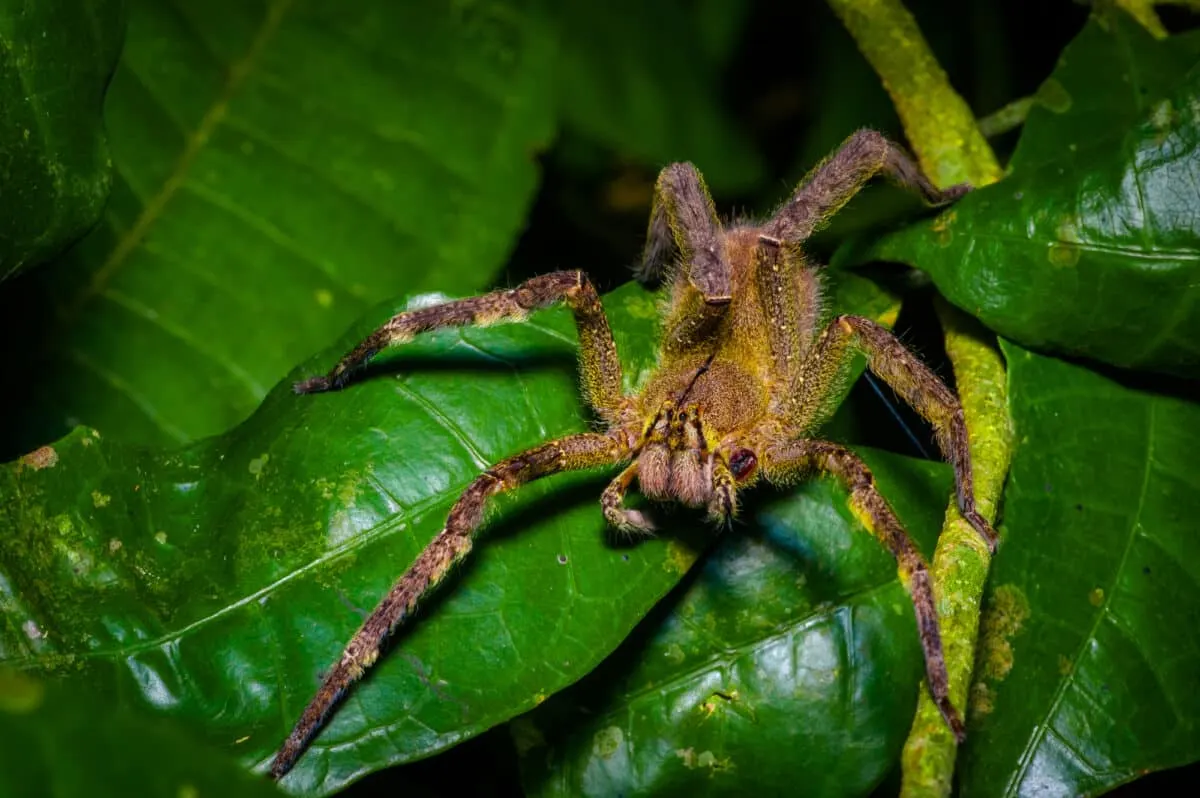Few things fear people’s hearts, like the mention of venomous spiders. According to the Guinness World Records, venomous spiders are some of the most dangerous creatures on Earth, and the Brazilian Wandering Spider is the world’s most venomous spider. This elusive arachnid is found in the rainforests of South America, more specifically in Brazil, Argentina, and French Guiana. ‘
It is considered one of Brazil’s most significant public health threats, with a potent venom capable of causing extreme pain, paralysis, and even death. Despite its fearsome reputation, however, the Brazilian Wandering Spider is a fascinating and unique creature with many incredible features that make it stand out from other spiders.
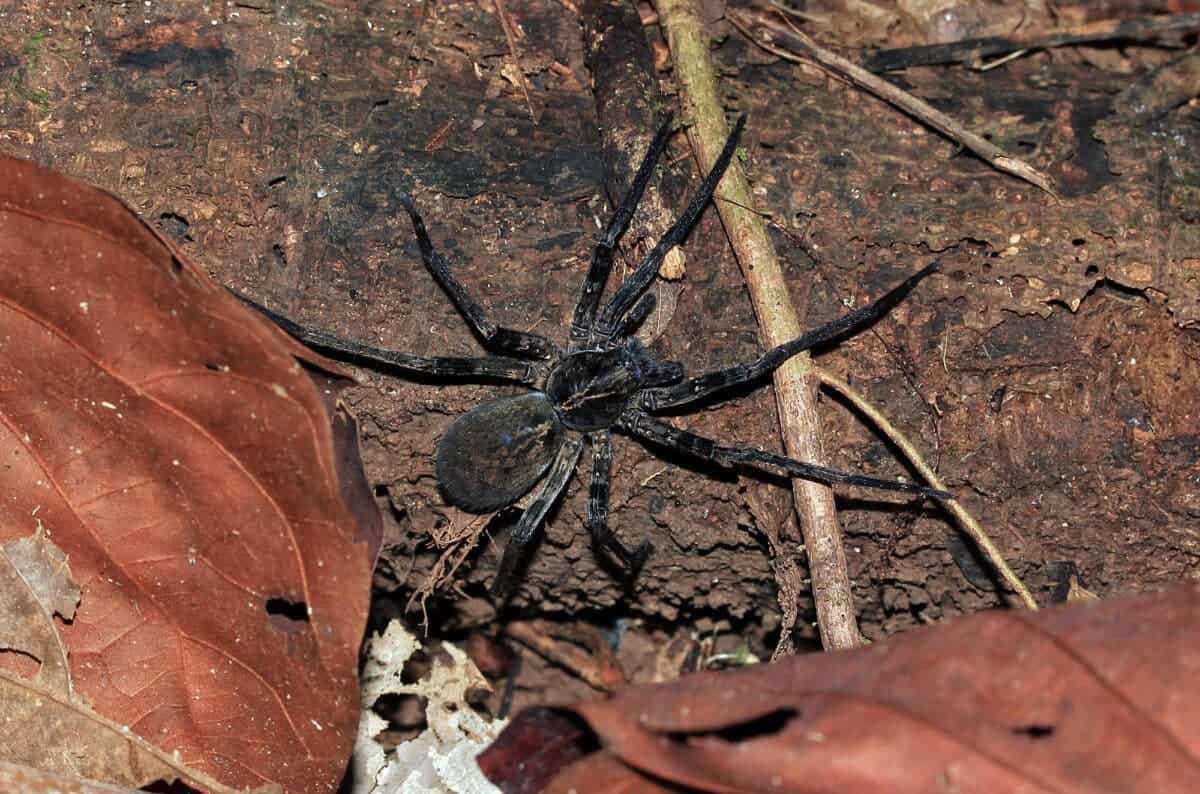
Jump ahead to any section below!
Brazilian Wandering Spider’s Habitat And Range
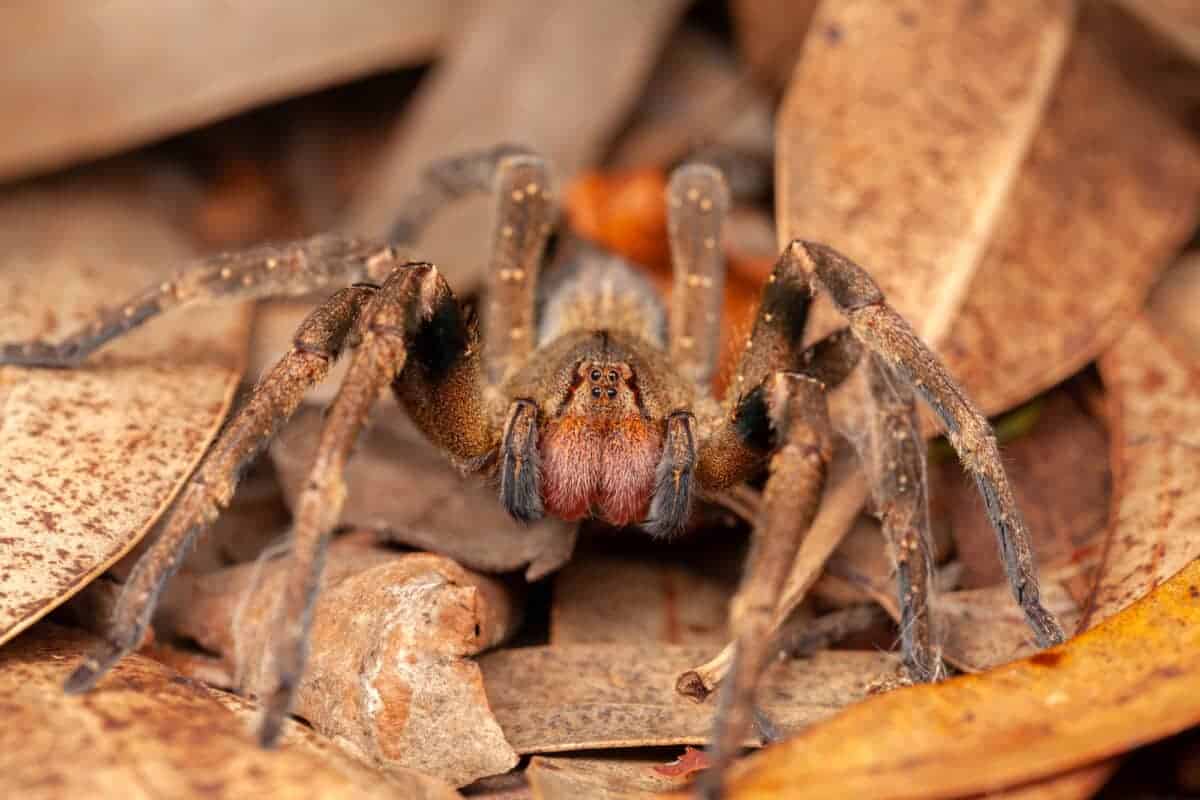
The Brazilian Wandering Spider is found in the rainforests of South America. These rainforests are the world’s largest and most biodiverse terrestrial ecosystems, covering an area of approximately 6.7 million square kilometers. This equates to roughly 40% of the total area of South America and spans nine countries, including Brazil, Peru, and Colombia.
The Amazon rainforest, the most extensive rainforest on Earth, plays an essential role in the Brazilian Wandering Spider’s habitat and range. The spider relies heavily on the dense canopy of trees in these rainforests for shelter and protection. The Amazon rainforest also provides the spider with an abundant prey source, including insects, small mammals, and other spiders.
The South American rainforests are characterized by their warm and humid climate, which creates the ideal conditions for the Brazilian Wandering Spider to thrive. These ecosystems also have a high rainfall throughout the year, which sustains the dense vegetation and creates an ideal environment for spiders to hunt and reproduce.
Check out: Uncovering The Enigma Of The Greenland Shark.
Specific Locations The Brazilian Wandering Spider Is found
The Brazilian Wandering Spider is most commonly found in Brazil. It can also be found in other parts of South America, such as Argentina and French Guiana. In Brazil, the spider can be found in various regions. This includes the Amazon rainforest, the Atlantic forest, and the Caatinga ecosystem.
The Atlantic forest, a tropical forest that spans the Brazilian coast, is also an important habitat for the Brazilian Wandering Spider. This ecosystem is under threat due to deforestation and urbanization. This has resulted in the loss of the spider’s natural habitat.
In French Guiana, the spider is present in the Guiana Amazonian Park, a protected area of the Amazon rainforest managed by the French government. The Guiana Amazonian Park is home to an array of biodiversity, including monkeys, jaguars, and over 400 species of birds. This makes it an important region for the Brazilian Wandering Spider’s survival.
Brazilian Wandering Spider’s Characteristics
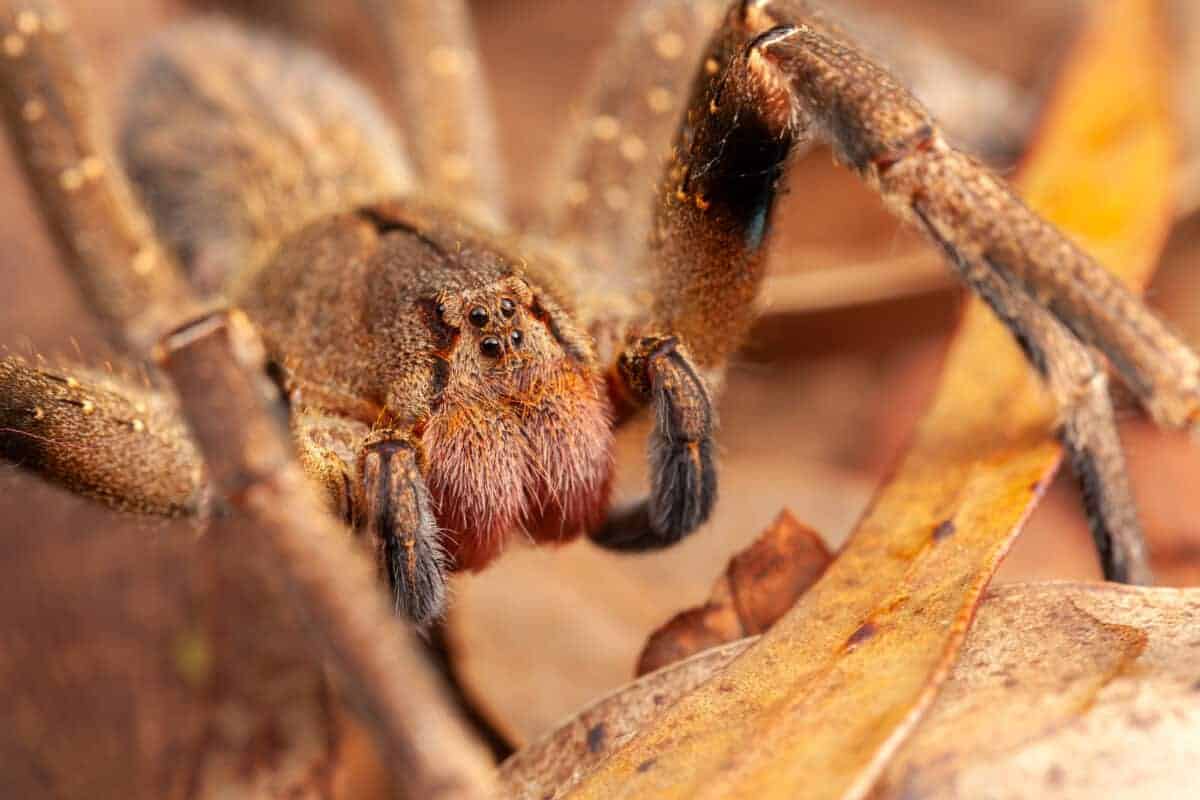
It is a remarkable arachnid species found in the rainforests of South America. It has numerous unique characteristics from other spiders. The Spider is large and intimidating, measuring up to 10 inches (25 cm) in leg span. Its body size ranges from 0.98 to 1.77 inches (2.5 to 4.5 cm) in length. This makes it one of the biggest spider species in the world. It has eight long and hairy legs, which help it move quickly and climb trees effortlessly.
The spider is striking, with a shiny brown or black body covered in short fine hairs. Its legs are also covered in fine hairs with dark stripes or spots. These markings have a unique pattern that helps to identify the spider from other species. Unlike most spiders, the Brazilian Wandering Spider doesn’t have a distinct web-spinning organ. But instead moves around the forest floor and trees in search of its prey.
Behavioral Patterns
They are aptly named because they are known to wander about and can cover a great distance while searching for food and mates. It’s primarily active at night and is a solitary hunter that preys on insects, spiders, rodents, and even small snakes. It has a unique hunting technique where it grabs its prey with its front legs and sinks fangs into it, injecting a potent venom that can quickly immobilize and kill its victim. Interestingly, this spider can adjust the amount of venom it injects to fit the size and the species of its prey, a skill unique to this spider species.
During the mating season, the Brazilian Wandering Spider’s behavior changes drastically. The males will approach females cautiously, tapping on the female’s web to signal their interest. They then perform a complex courtship display that involves waving their front legs, drumming their pedipalps, and vibrating on webs. The more intricate the display, the higher the chances of mating with the female.
Brazilian Wandering Spider’s Venom
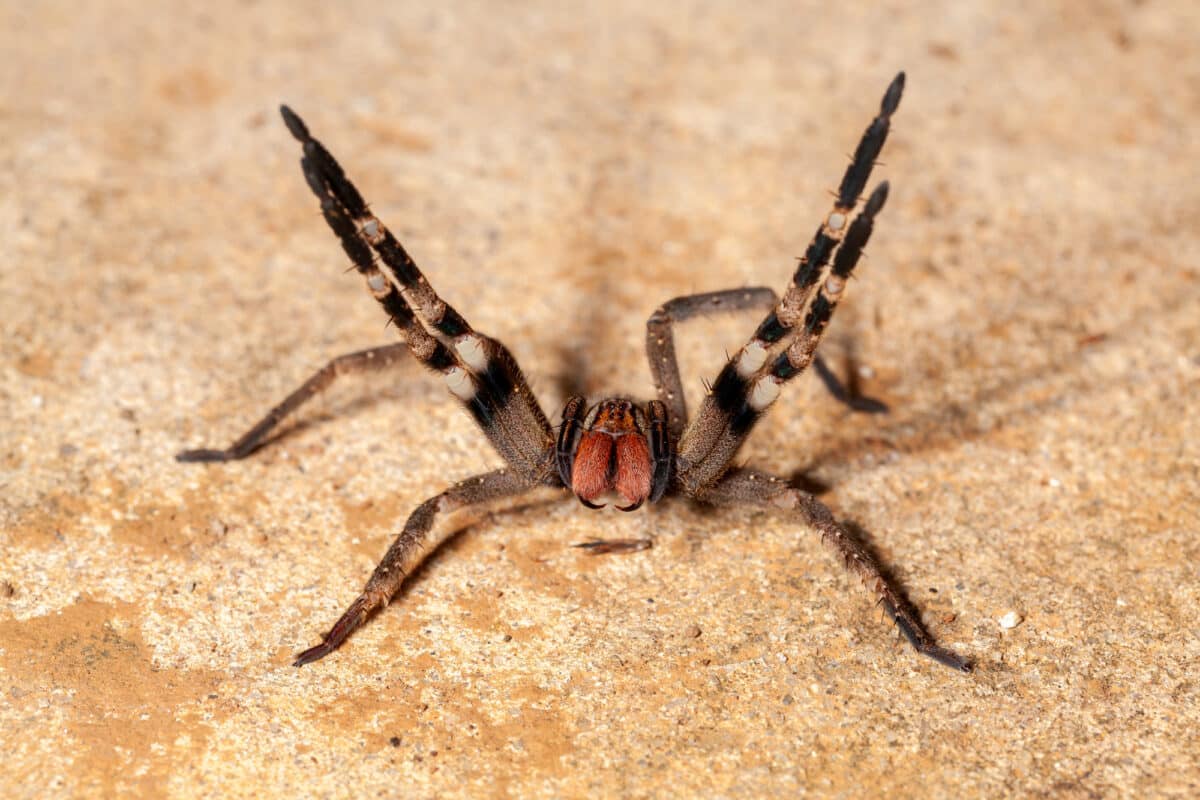
The venom of the Brazilian Wandering Spider is considered one of the deadliest in the world. The potency of the venom is due to the presence of a potent neurotoxin called PhTx3. This toxin is responsible for the spider’s ability to paralyze its prey and defend itself from predators.
In scientific studies, the venom of the Brazilian Wandering Spider has proven to be significantly more toxic than other venomous spiders, such as the Black Widow and the Brown Recluse. The effectiveness of this venom is a result of its unique chemical structure, which allows it to attack the nervous system of its victim and cause significant damage.
Check out: Bengal Tiger Vs. Western Diamondback Rattlesnake.
Effects Of Venom On Humans And Animals
The effects of the venom of the Brazilian Wandering Spider can be devastating. When bitten, victims may experience severe pain, muscle spasms, and even paralysis. In extreme cases, the venom can cause respiratory failure, resulting in death.
While the venom initially causes pain and discomfort, it can lead to severe, long-lasting symptoms. In addition to causing physical harm, the venom can also have psychological effects, leading to anxiety, panic attacks, and even PTSD.
Animals are also susceptible to the venom of the Brazilian Wandering Spider. Small animals, such as mice and birds, are often preyed upon by the spider, while larger animals, such as dogs and cats, can be bitten accidentally.
Public Health Threat And Prevention
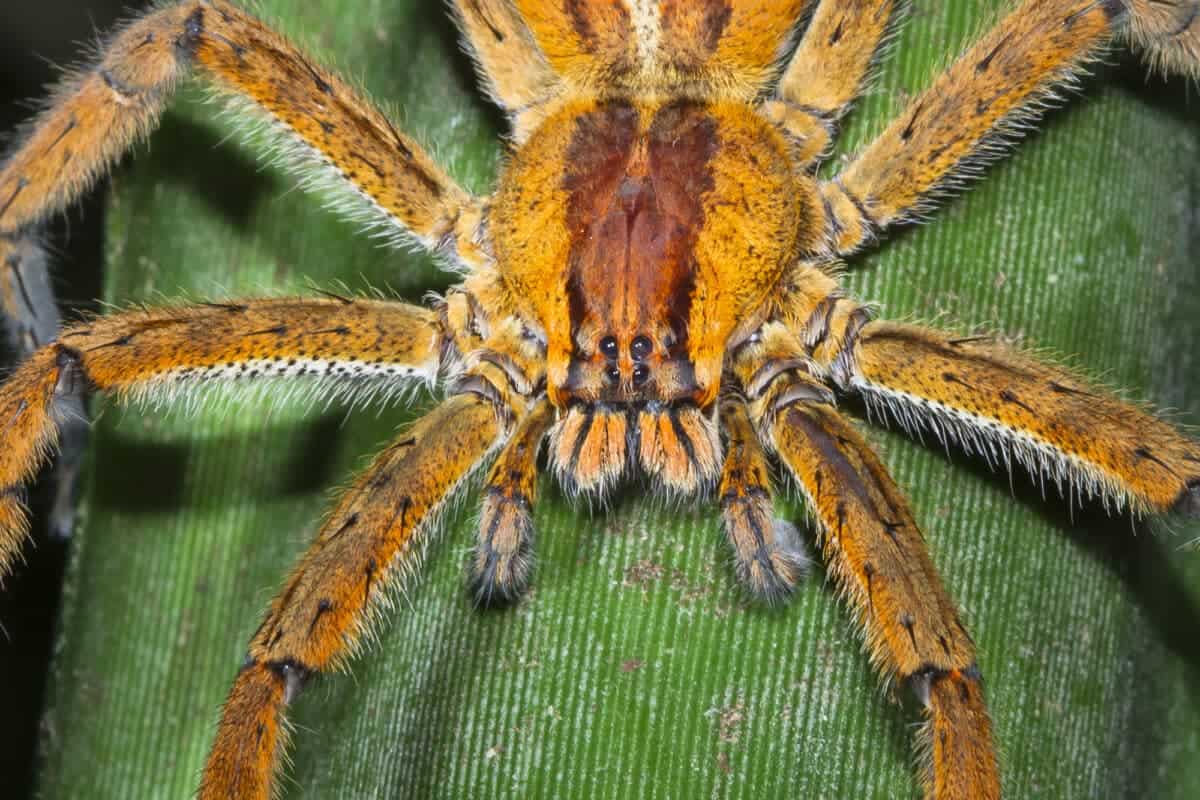
The Brazilian Wandering Spider is a significant public health threat in Brazil, with hundreds of bites reported yearly. The spider has a wide distribution throughout the country, and its venom is particularly toxic, making it a serious risk to human health.
Also, the spider is especially dangerous because it is highly aggressive and can be found in homes, gardens, and public spaces. This means that anyone can encounter the spider, regardless of location or occupation, making it difficult to prevent bites.
Measures Taken To Prevent Bites And Treat Victims
To prevent bites from the Brazilian Wandering Spider, it is essential to take steps to reduce the risk of encountering the spider. This may include keeping homes and gardens free of clutter and debris, sealing windows and doors, and avoiding areas where the spider is known to live.
In the case of a bite, it is important to seek medical attention immediately. While no anti-venom is available, medical professionals can offer supportive care to alleviate symptoms and prevent complications.
Frequently Asked Questions
The Brazilian Wandering Spider’s venom contains a potent neurotoxin called PhTx3, which can cause extreme pain, muscle spasms, and paralysis in humans. This venom is 20 times more deadly than a rattlesnake’s and can cause respiratory failure in victims.
It is primarily found in South and Central America, especially in the Amazon rainforest. They hide in dark, moist environments such as piles of leaves, tree trunks, and burrows.
To avoid contact with the Brazilian Wandering Spider, it is important to inspect your surroundings, especially before putting on shoes or reaching into piles of debris. It is advisable to wear gloves and long sleeves when working outdoors or in areas where these spiders may be present. If you suspect a Brazilian Wandering Spider has bitten you, seek medical attention immediately.
Key Points
| The Brazilian Wandering Spider is found in the rainforests of South America. These rainforests are the world’s largest and most biodiverse terrestrial ecosystems, covering an area of approximately 6.7 million square kilometers. |
| The spider is striking, with a shiny brown or black body covered in short fine hairs. Its legs are also covered in fine hairs with dark stripes or spots. |
| They are aptly named because it is known to wander about and can cover a great distance while searching for food and mates. |
| In scientific studies, the venom of the Brazilian Wandering Spider has proven to be significantly more toxic than other venomous spiders, such as the Black Widow and the Brown Recluse. |
| The males will approach females cautiously, tapping on the female’s web to signal their interest. |
Wrap Up
Overall, the Brazilian Wandering Spider is a fascinating and deadly spider that deserves respect and caution. Though its venom is incredibly potent, the spider itself is a remarkable creature. Its ability to move quickly and seamlessly across the ground makes it a formidable predator in its native habitats.
Despite its fearsome reputation, we must learn to coexist with this remarkable arachnid, preserving its unique place in the natural world. Given the immense diversity and beauty of our planet’s biodiversity, the Brazilian Wandering Spider reminds us that we still have much to learn about the remarkable creatures that share our planet.
thanks for reading along! See below for related article links.
Next up:
- Basking Shark
- Whale Sharks
- Tiger Shark Encounters
- The Great White Shark: Apex Predator of the Ocean
- Gorilla And Anaconda In Focus
- The English Bulldog
- Largest Asian Elephant
- The Largest Gorilla Ever Recorded
Join our Forum for free today!

- Huge Pet Bison Breaks Into House - July 22, 2024
- Giant Black Bear Surprises Beachgoers by Emerging from the Ocean in Florida - July 22, 2024
- Brave Man Plays Instrument While Huge Bear Caresses His Shoulder - July 22, 2024

